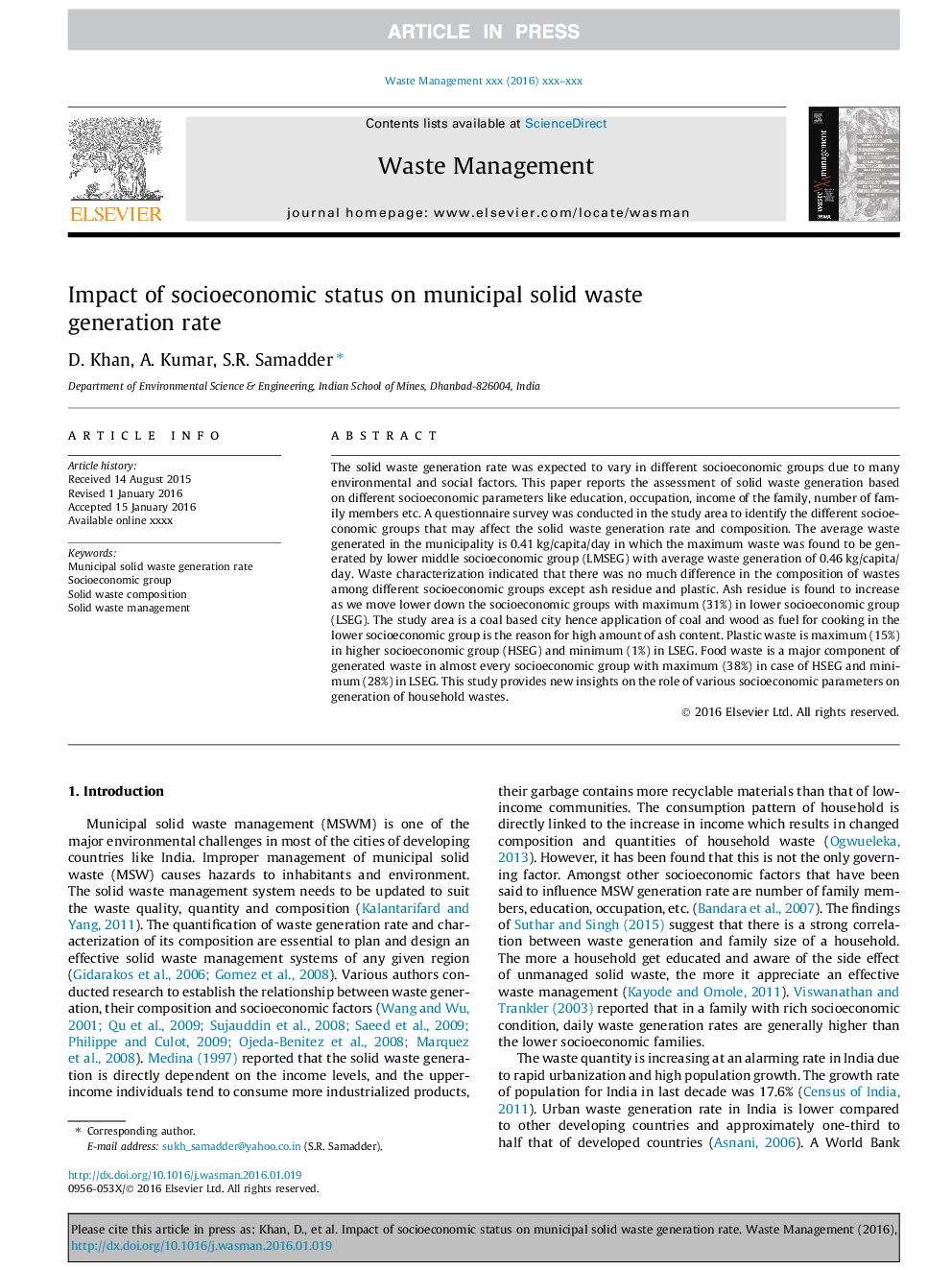| Article ID | Journal | Published Year | Pages | File Type |
|---|---|---|---|---|
| 6353727 | Waste Management | 2016 | 11 Pages |
Abstract
The solid waste generation rate was expected to vary in different socioeconomic groups due to many environmental and social factors. This paper reports the assessment of solid waste generation based on different socioeconomic parameters like education, occupation, income of the family, number of family members etc. A questionnaire survey was conducted in the study area to identify the different socioeconomic groups that may affect the solid waste generation rate and composition. The average waste generated in the municipality is 0.41Â kg/capita/day in which the maximum waste was found to be generated by lower middle socioeconomic group (LMSEG) with average waste generation of 0.46Â kg/capita/day. Waste characterization indicated that there was no much difference in the composition of wastes among different socioeconomic groups except ash residue and plastic. Ash residue is found to increase as we move lower down the socioeconomic groups with maximum (31%) in lower socioeconomic group (LSEG). The study area is a coal based city hence application of coal and wood as fuel for cooking in the lower socioeconomic group is the reason for high amount of ash content. Plastic waste is maximum (15%) in higher socioeconomic group (HSEG) and minimum (1%) in LSEG. Food waste is a major component of generated waste in almost every socioeconomic group with maximum (38%) in case of HSEG and minimum (28%) in LSEG. This study provides new insights on the role of various socioeconomic parameters on generation of household wastes.
Keywords
Related Topics
Physical Sciences and Engineering
Earth and Planetary Sciences
Geotechnical Engineering and Engineering Geology
Authors
D. Khan, A. Kumar, S.R. Samadder,
